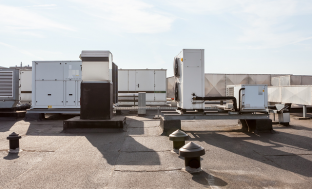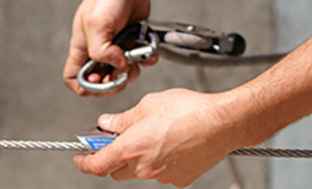latest news
How to make sure lone workers are safe

By Mark Dolan, General Manager, Roof Edge Fabrications
In previous Blogs, when discussing safe work at height, the guidance I’ve given has been in relation to ‘teams’ working at height. However, not everyone will be working as part of a team so you need to consider carefully how you can provide a safe working environment for lone workers.
What is a lone worker?
“A lone worker is an employee who performs an activity that is carried out in isolation from other workers without close or direct supervision.”
When working at height, lone workers could include surveyors, M&E engineers, window cleaners, and roofers. There could also be people working outside of normal working hours who are lone workers and need to access areas at height, such as security and maintenance staff. In all cases, whenever a person is required to work alone, you need to ensure that there is a system in place to manage the risks effectively.

Controlling the risks
All employers are legally responsible for the health, safety and welfare of all workers, contractors or the self-employed who are carrying out work for them, which means they are required to assess the risks to lone workers, and take steps to avoid or control the risks where necessary.
This can be done by:
- Consulting with workers – they are in the best position to
- Taking steps to remove the risks
- Putting control measures in place to allow work to be carried out safely.
- Ensuring there is sufficient instruction, training and supervision
- Reviewing risk assessments on a regular basis, particularly when working practices have changed.
Carrying out a lone worker risk assessment
When carrying out a lone worker risk assessment, there will be specific issues that need careful consideration.
These can include:
- Access: If portable access equipment such as ladders are required, can the worker handle and carry them easily? You may want to consider lightweight ladders such as surveyors/telescopic ladders which are easy to handle and can be lifted up to roof level if theft is a concern.
- Manual handling: Is equipment easy to carry? If it needs to be transported to a roof level, can a single person do this without putting themselves at risk?
- Machinery: If machinery is to be used, can a single person operate it safely?
- Location: Could the location present a risk to a lone worker? For example, is there a threat risk of violence or aggression? If there is a risk then simple measures such as In these ‘dressing down’ to suit the surroundings should be considered
- Health: Is the worker fit or do they have a medical condition? If so, are they able to work alone? When assessing the risks you will need to think about both routine work and any potential emergencies that could arise as a result of the condition.
- Emergencies: Can the worker be contacted in the event of an emergency. For example, a lone worker on a roof may not necessarily hear a fire alarm, so you need to consider how to alert them and direct them to safety.

Training
Training is essential when working at height and where there is limited supervision. As with any person working at height, lone workers should be trained in standard risk assessment, work at height, rescue at height and manual handling, but the nature of their work also requires additional training such as how to cope in unexpected circumstances, practical risk avoidance strategies and communication skills (how to diffuse a situation).
Employers must ensure that workers are competent to deal with the requirements of the job and are able to recognise when to seek advice from other sources.
Monitoring lone workers
Monitoring procedures must be put in place so that you can be sure the worker is safe, these could include:
- Regular visits by a supervisor
- Scheduled contact with the lone worker, such as by phone, radio or email.
- Manual or operated warning devices which can trigger an alert if a signal is not received from the lone worker over a specified time period.
- Monitoring of lone workers to ensure they are following correct working procedures

Always review
As with any procedure, you must regularly review your working practices, risk assessments and policies, especially when procedures change or an incident occurs. Lone workers are more vulnerable than general workers, so it’s essential that you do everything possible to ensure you protect them as far as ‘practicably’ possible.
The procedures here are merely an outline of what you can do and can help you to provide a safe working environment for all those you are responsible for. If however you are unsure of what you need to do to protect lone workers, always seek expert advice.





